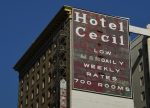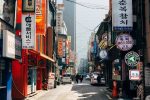LA’s Koreatown is simply known as the “best Koreatown outside of Korea” for several reasons. Its innovative restaurants, colorful nightclubs and bustling markets continue to attract numerous visitors who wish to gain a taste of authentic Korean culture that many do not have access to outside of Korea.
Although the cultural diversity of Koreatown has grown exponentially — thanks to the skyrocketing popularity of K-pop and Korean cuisine — this particular district has not always garnered the same amount of success and adoration it receives today.
In fact, many are unaware of the muted struggles that once plagued the Korean enclave. Settlement was segregated and racism greatly affected the neighborhood. However, it is these conflicts that ultimately make the rise of LA’s Koreatown even more magnificent.
The Birth of Koreatown
The establishment of Koreatown is mostly credited to Korean independence activist An Chang-ho, who immigrated to America in 1902 with his wife, Hye Ryeon Lee, making them the first-ever married Korean couple to arrive in America. They moved to San Francisco before deciding to migrate to Bunker Hill in the middle of Downtown Los Angeles around 1903.
An, who soon became the leader of the Korean independence movement and founder of the Korean National Association, eventually came to form the Korean Presbyterian Church on Jefferson Boulevard. Many Korean immigrants came to flock to this area — creating a small section of the city that would eventually be known as current-day Koreatown.
Later, thousands of Korean immigrants — from Korean War orphans to international students — began to move to America. This allowed a once predominantly white community to become a gradually diversifying multiethnic neighborhood.
The small district began to flourish even more thanks to businessman Hi Duk Lee, who identified the initial lack of Korean restaurants and grocery stores for the growing Korean community. In response to this situation, Lee proceeded to open the Olympic Market in 1971, which he stocked with his favorite Korean products.
The market quickly became a booming success with thousands of Korean people visiting to purchase their own ethnic foods. Following the market’s success, Lee purchased five blocks around Normandie Avenue and Olympic, where he built the current prestigious Guelaguetza restaurant, as well as a shopping center that featured numerous small Korean-owned businesses.
However, he did not stop there. Lee’s realization that there was no official “Koreatown” fueled his ambition to establish an official district that Korean Americans could call their own. He worked closely with city officials and property owners to gradually open more Korean-owned businesses. Lee also managed to organize cultural fairs and festivals to showcase Korean arts throughout the year. Thanks to Lee’s constant efforts, Koreatown finally became recognized as its own unique district by Los Angeles County in 1980.
The Effects of Racism on Koreatown
Even before the success of Koreatown, there was a subtle sort of xenophobic fervor that plagued the area. This is most evident in the 1924 National Origins Act, which put restrictions on the number of immigrants that could come from Asia, the Middle East and other parts of the world.
Unfortunately, LA’s Koreatown continued to experience even more serious complications regarding racism as the area began to grow even more prosperous. Racial tensions peaked in 1991 when four white policemen threatened and brutalized Rodney King, a Black American man.
Consequently, an uproar broke out across Los Angeles in spring 1992, when the fury over the policemen’s acquittal became unknowingly directed toward the Korean community. More than 2,000 Korean-run businesses were destroyed during the riots, which caused an estimated $400 million in damages.
Many Koreatown residents felt abandoned by the city as they were left to fend for themselves during the riots and looting. Following the aftermath of the LA Riots, Koreatown was left in pieces, with many small businesses being forced to close down for good.
The Rebuilding and Current Success of Koreatown
Despite this tragedy, Koreatown began to slowly rebuild itself, assisted by many of the younger Korean Americans who decided to invest in Koreatown businesses. South Korean investors later joined in on this trend by investing in more large-scale projects in Koreatown.
Throughout the past two decades, Koreatown has experienced a sudden increase in big-ticket development, with numerous projects currently in progress. Thanks to the prominence of several Korean artists such as Psy and BTS, many more people have been supporting and visiting Korean-owned businesses, especially the younger, more hip students who reside near the area.
Although it is extremely difficult for many longtime Koreatown residents to imagine the suffering that the neighborhood has experienced in the past, it is important to try to see beyond the success of Koreatown by acknowledging past hardships. Only then can one fully appreciate the magnitude of what Koreatown truly has to offer.

















